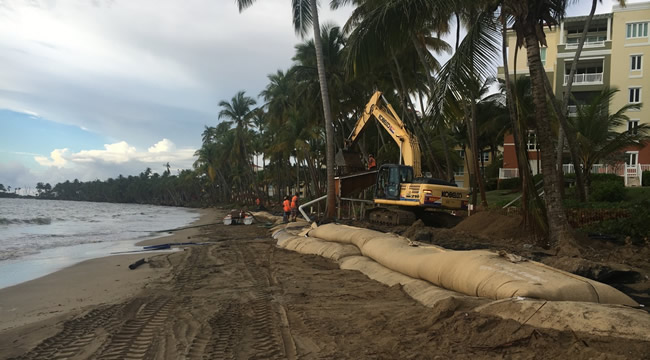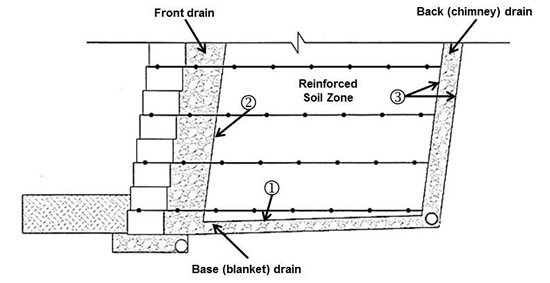The Geosynthetic Institute’s GSI Webinar series provided high-level education and resources on all geosynthetic applications and materials. The next offerings will focus on geotextiles. Specifically, geotextile tubes and geotextile filters.
- June 13, 11:30 am – 1:00 pm (EDT): Applications and Design of Geotextile Tubes
- July 11, 11:30 am – 1:00 pm (EDT): Geotextile Filters: Concerns and Issues
Each webinar offers 1.5 professional development hours, upon completion of a 10-question multiple choice test. Course descriptions and webinar details are below. Cost per webinar: $200 GSI Members, $250 Non-Members.
REGISTER ONLINE

APPLICATIONS & DESIGN OF GEOTEXTILE TUBES
The June 13 webinar topic is “Applications and Design of Geotextile Tubes.” Geotextile tubes are large factory-fabricated textile tubes with multiple access ports for introduction of infill material. Generally, that fill is dredged and in slurry form. Sand or gravel is used for erosion control, whereas soil fines and sludges are used for dewatering and/or decontamination. The geotextile tubes themselves have progressed up to 5 m in diameter and the applications have grown accordingly.
Following the session’s initial overview, a nine-part design procedure will be presented. This structure will represent the current state of practice for geotextile tubes and their applications. The webinar then will proceed with details of adding decontamination materials to the slurries for the purpose of properly handling contaminated river and harbor sediments. Several economic examples will be presented. The summary will counterpoint the various applications against one another.
Participants will learn about geotextile manufacturing details, including testing, as well as design idiosyncrasies of geotextile tubes. The design has indeed progressed to where confidence of success is readily achieved. Current extensions into adding deflocculants to reduce “filter cake” formation and neutralizing hazardous constituents of fine-grained sludges will be explained accordingly.
GEOTEXTILE FILTERS: CONCERNS & ISSUES
The July 11 session will focus on “Geotextile Filters – Concerns and Issues.” It is roughly estimated that geotextiles have been used in over 500,000 filtration applications to date. Improper performance is extremely rare. In the Geosynthetic Institute’s extensive database of field problems, there are only 82 published or known cases (~ 0.016%). Yet, these are important to recognize in the context of “lessons learned” so as not to be repeated in the future. The various case histories geotextile filters are categorized into the following groups:
- Geotextile filter designproblems
- Problems involving atypical soils
- Problems involving atypical permeants
- Geotextile filter installationproblems

The webinar will be generously illustrated with cross-sections of specific situations as well as photographs of significance.
Insofar as a summary and recommendations are concerned, it is felt that the state of practice in design with geotextile filters is very good when dealing with water as the permeant flowing through “typical” soils. In this regard, atypical permeants and/or unique soils need special consideration. Certainly high suspended soils and/or biological contaminants are of concern. Unique soil types such as cohesionless fine sands and silt, dispersive clays, and ochre should be evaluated accordingly. Long-term laboratory equilibrium testing will be described in the webinar for such situations and they will be described accordingly. Lastly, graded geotextile filters will be described and recommended for unique situations.
Webinar participants will learn the three concepts of geotextile filtration design using a series of gradually sophisticated methods. All of the 82 field case histories will be explained in this context. Not only will causes of problems be illustrated but clear explanations will be given. Many situations become obvious after the situation has occurred. Also, several situations are challenging at the present time (e.g., reversing flow conditions, ochre growth, and installation practices) and these will be addressed.
REGISTER ONLINE











